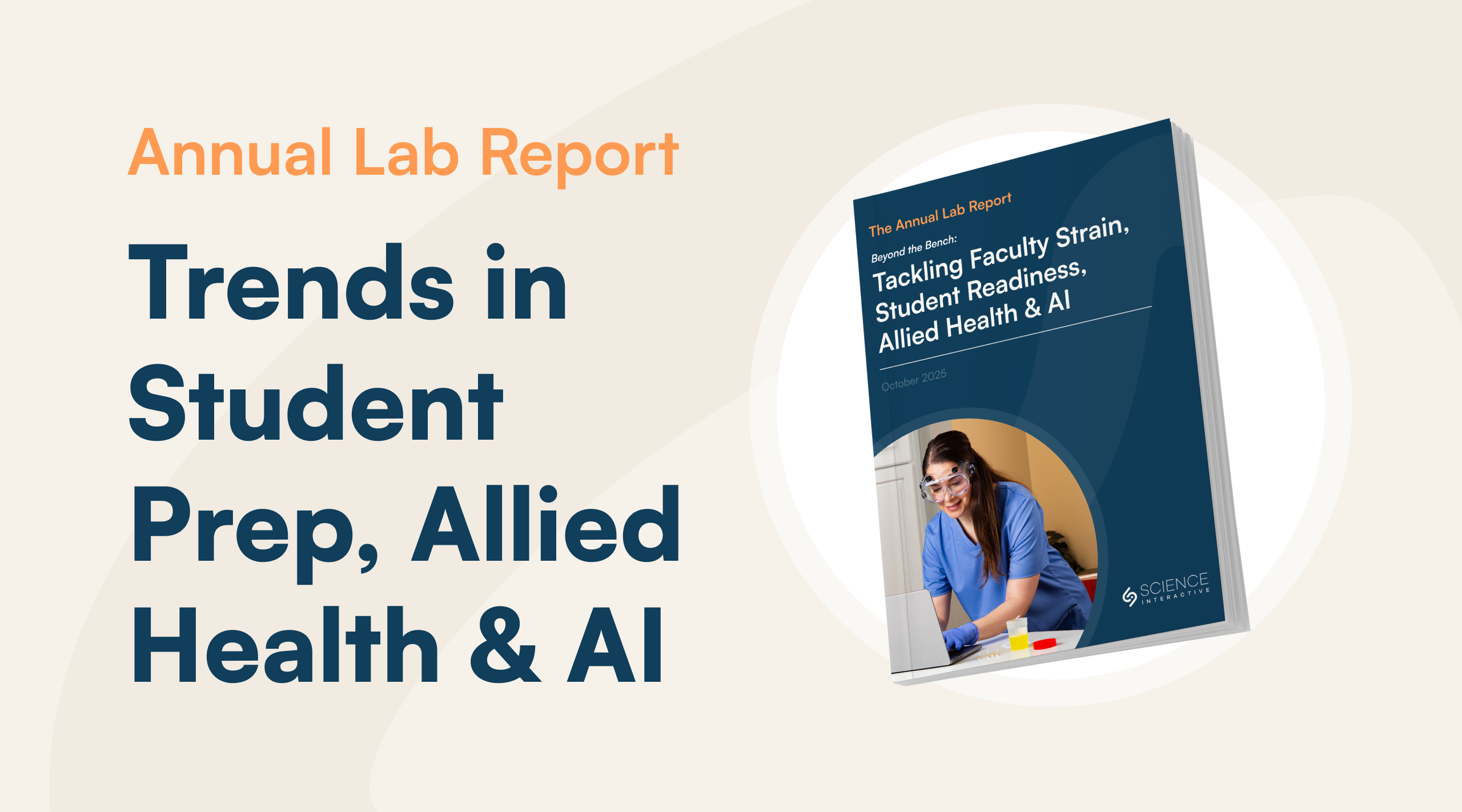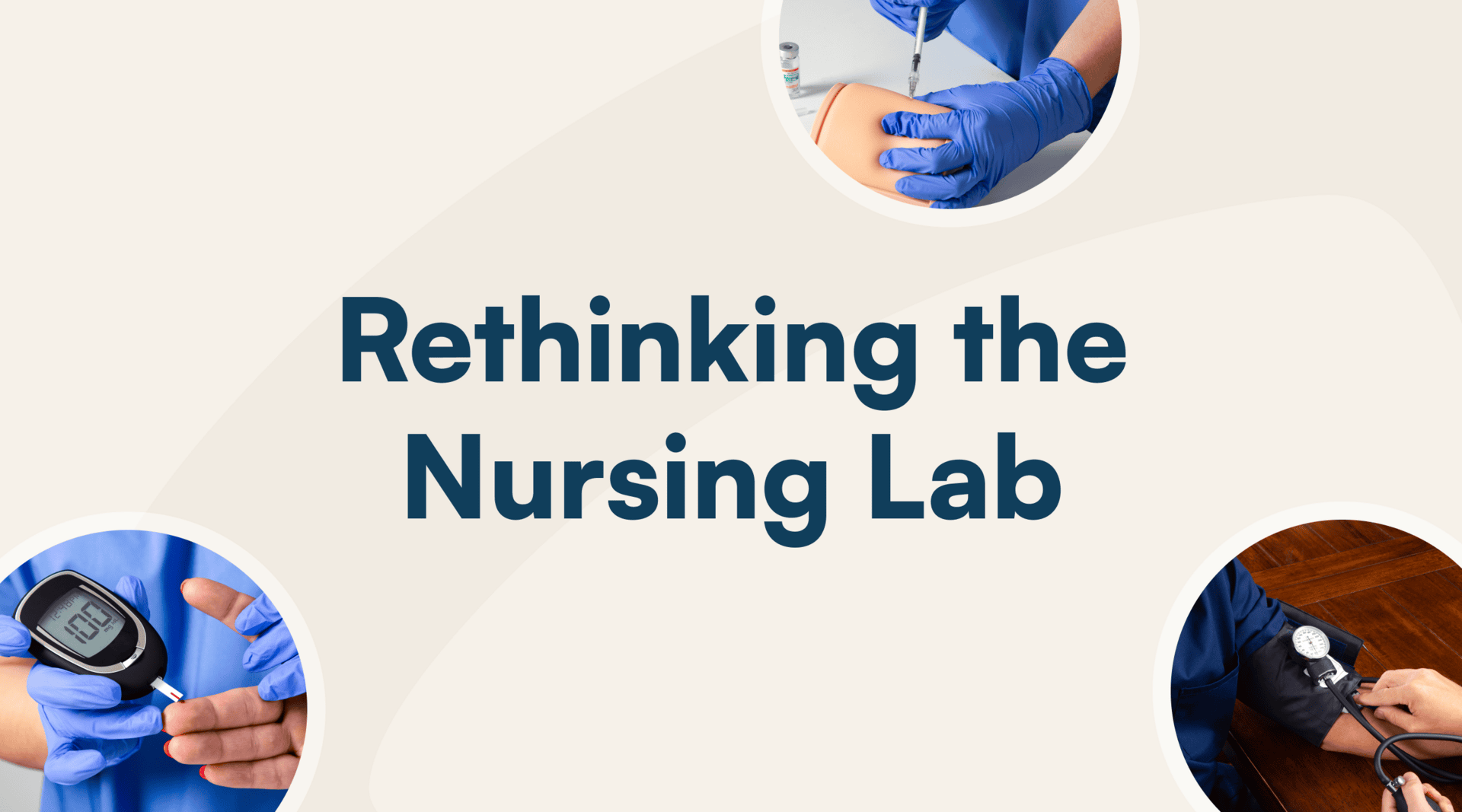You Can’t “Click” Your Way to Clinical Readiness
Virtual simulations are incredible tools—no doubt. They offer immersive, scalable experiences that can bring clinical scenarios into students’ homes and make them come to life. But let’s face it: no one learns how to draw blood from a drop down menu. And when it comes to nursing fundamentals, there’s a growing disconnect between what students know virtually—and what they can actually do with real patients.
In online Nursing Fundamentals courses, this gap isn’t theoretical. It can become painfully real. Students might pass virtual modules but hesitate or freeze when it’s time for hands-on clinical skills. The stakes? Patient safety and student success. The root cause? Virtual simulations alone don’t develop the muscle memory, tactile feedback, and real-world confidence essential to clinical competence.
The answer isn’t to ditch virtual simulations. They play a crucial role in decision-making and clinical judgment. But they’re only half the picture. Hands-on labs that let students physically practice procedures, combined with virtual labs that reinforce that learning, create the strongest foundation for success in any nursing fundamentals course—leading to better retention, improved clinical performance, and higher student confidence.
Let’s break down why online Nursing Fundamentals programs can’t afford to ignore hands-on learning.
What Virtual Labs Do Well—And Where They Fall Short
Virtual simulations excel at creating safe, repeatable environments where students can sharpen clinical reasoning, decision-making, and prioritization—especially with rare or high-risk scenarios. This kind of low-stakes exposure is key for early learners.
But no matter how sophisticated the technology, virtual labs can’t replicate what happens when a student’s hands meet real equipment. Even the most advanced AR and VR tools can’t deliver the tactile feedback needed for fine motor skills—like feeling a pulse or inserting an IV. They also lack the physical repetition that builds muscle memory and allows instructors to assess subtle technique or body mechanics.
✅ Virtual Labs Are Great For:
- Reinforcing theory and learning
- Navigating complex or rare scenarios
- Repeating scenarios without real-world consequences
🚫 But Not So Great For:
- Building fine motor skills
- Developing muscle memory
- Training hand-eye coordination and physical technique
A 2024 scoping review in Teaching and Learning in Nursing backs this up. It found that while simulations and tech can support learning, hands-on practice is still essential for developing psychomotor skills. Translation: even the best virtual tools can’t replace the real thing.
Consider a student who nails IV insertion in a simulation—but hesitates or fumbles when faced with a real arm. That’s not a knowledge gap. That’s a practice gap.
See Nursing Fundamentals in Action
The Clinical Confidence Gap Is Real—and Growing
It’s not just anecdotal. Faculty and clinical preceptors across programs report a consistent phenomenon: students who excel in simulations struggle in clinical placements. They hesitate with equipment, struggle to manage physical space efficiently, and show poor hand-eye coordination during basic tasks. These aren’t cognitive failures—they’re practice failures.
The National League for Nursing (NLN) stresses that psychomotor skill development is vital for clinical readiness, explicitly stating that simulation alone cannot replace hands-on practice (NLN, 2023). The American Association of Colleges of Nursing (AACN) echoes this, emphasizing that clinical competence requires more than virtual rehearsal.
After all, would you trust a nurse who has only practiced injections in a virtual headset?
Why Nursing Fundamentals Needs Both Virtual and Hands-On Learning
Nursing Fundamentals is the bedrock of a nurse’s clinical skill set. It’s where students first learn to:
- Take vital signs accurately
- Administer injections safely
- Manage infection control
- Recognize abnormal patient cues
Clinical partners expect students to arrive at externships with these skills in hand—not learning them for the first time at the bedside.
Pairing hands-on practice with virtual simulations doesn’t just fill a void—it elevates learning. Programs using this dual approach report better clinical performance, higher student engagement, and improved long-term retention of skills.
- Stronger Skill Retention
Combining tactile practice with virtual simulations improves long-term memory retention. Students not only see and understand concepts but also do them—solidifying both knowledge and physical technique. - Improved Clinical Confidence
When students can rehearse procedures in a hands-on setting after learning the “why” through simulations, they enter clinical placements more prepared and less hesitant. That builds real-world readiness. - Deeper Conceptual Understanding
Simulations help contextualize what’s happening during a procedure (the decision-making), while hands-on labs help students internalize how to physically carry it out. Together, they bridge theory and practice and work off one another to reinforce learning. - Better Learning Outcomes Across Modalities
This dual-modality approach supports diverse learning styles and provides instructors more data points for assessment—ensuring that online, hybrid, and in-person learners all get a consistent, high-quality experience.
In short, virtual paired with hands-on labs offer a smarter, more complete way to prepare nursing students—not just to pass, but to perform. This synergy creates nurses who don’t just think fast—they act with skill and assurance under pressure.
What Hands-On Looks Like in an Online Nursing Course
Science Interactive’s Nursing Fundamentals Kit brings this to life. Delivered directly to students’ homes, these kits include everything students need to practice core skills offline:
- Vital signs tools: blood pressure cuff, stethoscope, digital thermometer
- Injection training: realistic skin pads, syringes, injection arms
- Blood draw simulation: vein arms with palpable veins
- Wound care: sterile dressings and simulated injuries
Students practice at their own pace, submit video assessments or lab reports through the Science Interactive Lab Portal, and receive targeted instructor feedback. The system integrates seamlessly with LMS platforms like Canvas, Blackboard, and Moodle, making management easy for faculty.
Take Lena, a rural nursing student in Arizona. While she’s unable to enroll in an on-campus program due to distance, she is part of an online nursing program. She used the kit in her Nursing Fundamentals course to practice injections repeatedly, uploading videos weekly for instructor review. By the time she reached her externship, she wasn’t guessing—she was confident and capable.
Why “Externships Will Catch It” Is a Risky Bet
Many online programs assume externships will fill in the gaps in hands-on training. That’s a gamble with high stakes.
Externships are clinical test tracks—not learning labs. Preceptors expect students to come prepared with fundamental skills. According to the Accreditation Commission for Education in Nursing (ACEN) and the Commission on Collegiate Nursing Education (CCNE), programs must ensure students have adequate preparation before direct care experiences. Clinical skills must be assessed before placement (CCNE 2024 Standards).
When students arrive under-prepared, the consequences are real:
- Lower student evaluations
- Frustrated clinical preceptors
- Threatened clinical site partnerships
- Even risks to program accreditation
In fact, some clinical sites can limit student placements due to preparedness concerns. Hands-on preparation before externships isn’t optional. It’s strategic to program survival and vital to student performance and success.
How Science Interactive Makes Integration Easy Even for Online-Only Programs
Designed from the ground up for online instruction, Science Interactive labs are hassle-free for faculty and comprehensive for students:
- Kits ship directly to students or campus bookstores
- Faculty assign labs and track submissions through the Lab Portal—no course overhaul needed
- Grading and assessments are integrated and customizable
- Students submit videos, lab reports, and reflections digitally
This means instructors maintain full control over pacing, grading, and feedback without scrambling for materials or rebuilding courses. No sourcing supplies, no campus logistics headaches—just smooth, hands-on skill building that fits the flexibility of online programs.
Real Practice. Unlimited Repetition. No Guesswork.
The secret sauce? Practice—lots of it.
Unlike limited clinical check-offs or single in-person intensives, students with Science Interactive kits can repeat procedures as many times as needed, in low-pressure settings, while receiving personalized feedback from their instructor.
The combination of virtual decision-making and hands-on repetition builds a strong foundation for nurse students who are calm, competent, and confident when it counts. Students trained this way consistently report feeling better prepared for clinicals, while instructors and clinical partners notice the difference.
The Best of Both Worlds Starts in Fundamentals
Online nursing education doesn’t mean skills are optional.
Clinical expectations haven’t shifted because courses are offered online. Students still need to build muscle memory, refine technique, and show up ready to deliver care.
Programs that pair virtual simulations with tactile, hands-on kits give students the best of both worlds. With Science Interactive, flexibility and readiness don’t compete—they coexist.
If you want to see how our hands-on and virtual labs and nursing fundamentals kit can seamlessly fit into your fully online Nursing Fundamentals course, let’s talk. We’ll help you bring clinical confidence to your students without compromise.
Discover more articles

Research Reveals a Dual Prep Problem in STEM Courses & New Opportunities to Deliver Rigor at Scale

Science Interactive Launches New Nursing Fundamentals


